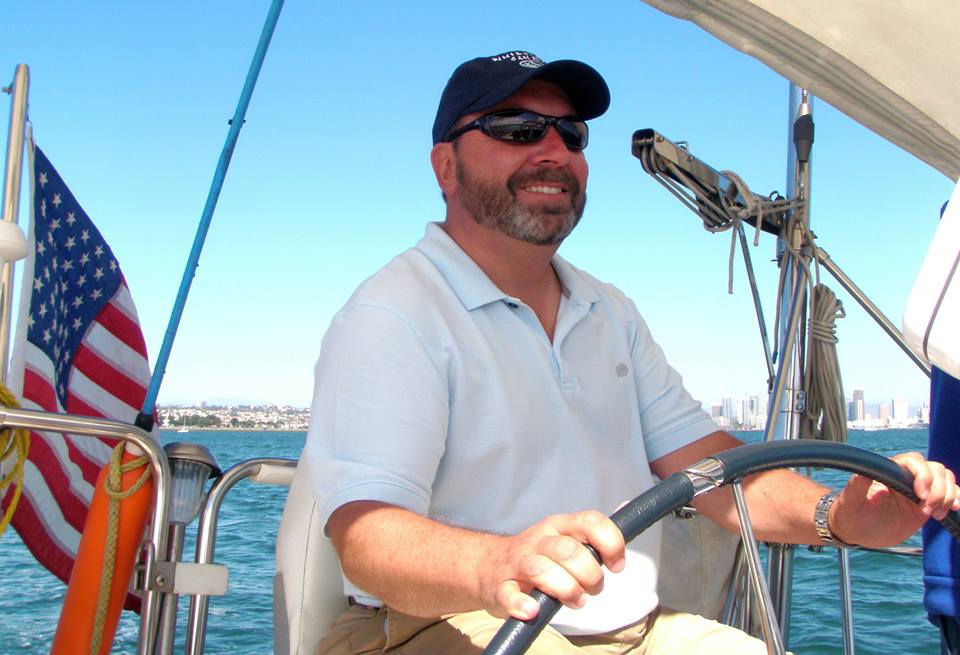 Ken Baptiste has been with the ALS since its origin, and he’s been known for his delicious rum cake that entire time. Along the way, he’s learned about the importance of meticulous planning and discovered a few hidden spaces at the Lab.
Ken Baptiste has been with the ALS since its origin, and he’s been known for his delicious rum cake that entire time. Along the way, he’s learned about the importance of meticulous planning and discovered a few hidden spaces at the Lab.
How long have you been at Berkeley Lab?
I’ve been at the Lab just over 38 years. I started at the Super-HILAC (Super Heavy Ion Linear Accelerator), another accelerator on the hill. It was part of the Bevalac, which combined two accelerators—the Bevatron and the Super-HILAC. I worked there for several years and then joined the ALS team in 1988 to build the ALS that we are running now.
What path did you take to become an engineer?
It was not the standard path. I joined LBL as an electronic maintenance tech, and I started almost immediately going to school at nights. I finished the degree in 2001, so it took a long time, but that’s what led me to this position. I worked in the rf (radio frequency) group as part of the ALS build project back in 1988, and I continued with the rf group until 2018.
What does your current role involve?
There is a joining of different streams here. I’m part of ALS, ALS-U, and I have roles in Engineering management. With all of the projects, the pandemic work rules and teleworking, it’s a busy time. Getting into technical details and solving challenges are the enjoyable parts. There is a lot of work planning and risk management, because you don’t want to enter into the installation phase during a shutdown without a plan B or C. We’re having to go to a plan B right now in the linac modulator replacement project that Ben Flugstad, the rf lead, is running. The plan A for sourcing new waveguide components (needed to connect the modulators and their klystrons to the linac) was delayed, but luckily, SLAC was able to help with a plan B. Without these waveguides, there’ll be no beam!
The goal is, first and foremost, to get all the work done safely and then make sure that the machine is available to deliver the beam to the users. Work planning ensures that we do not take hours of operations away from users.
Do you often collaborate with other national labs?
I worked on the injector—the photo-cathode gun rf system—for the LCLS-II project at SLAC. That was a formal collaboration—we had demonstrated the ability of that injector with the APEX (Advanced Photo-injector EXperiment) project, which is inside of ALS, and LCLS-II adopted that as part of their baseline. The LBL scientific and engineering team delivered the injector system to SLAC. We have a similar situation now with Brookhaven designing and delivering magnet power supplies for the ALS-U Project. There’s expertise in the different DOE labs that is often used in these collaborative projects.
Do you know of any hidden spaces around the ALS?
There’s a three-foot-diameter, 500-foot-deep shaft under the dome right next to the linac. It was put in for whatever experiment was being done at the 184-Inch Cyclotron, which used to be in Building 6 prior to ALS. Now we’ve stacked concrete shielding blocks on it for the linac, so it’s never going to be opened up again, or at least not for a very long time.
How do you incorporate inclusion, diversity, equity, and accountability (IDEA) into your work?
I focus on the inclusion part. In larger meetings, it’s sometimes difficult, from a time management point of view, to hear from everybody. I think it’s important to plan an agenda with items that are covered or delivered by a good cross section of the people in the meetings. It’s really making sure that everybody knows they can contribute and speak in these meetings, and can have that experience and opportunities to do so.
What do you like to do in your free time, aside from baking your famous rum cake?
I get too much credit for that. I certainly have helped make them and have helped eat them, but this was something that my wife, Judy, acquired the recipe for. We’ve been making this cake for as long as I’ve been working at the ALS, so it’s been a lot of fun, but it’s not all me. There’s a team behind it.
About five or six years ago, I took up sailing, and it’s a bit of hard work, but it’s very therapeutic. It’s nice to get out there and be in the wind and enjoy the outdoors. I joined a club in Richmond, and sometimes we do a day sail, sometimes we’ll drop the anchor and have lunch. Sometimes we drift during lunch or skip lunch altogether—however the day unfolds.
